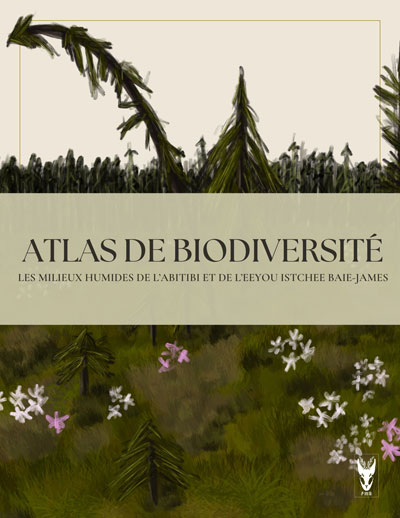
Marco Mina
Senior Researcher
Eurac Research ![]() , Institute for Alpine Environment, Bolzano/Bozen, Italy
, Institute for Alpine Environment, Bolzano/Bozen, Italy
Former Postdoctoral fellow
Université du Québec à Montréal
Directeur: Christian Messier
marco.mina [at] eurac.edu
Research interests
- Forest dynamics and succession modelling
- Use and development of stand- and landscape-scale forest simulation models
- Impacts of climate change and disturbances on forest ecosystems
- Forest management, silviculture and ecosystem services provision from temperate forest ecosystems
- Forest inventories, landscape ecology, forest biodiversity
Employment and formation
- 2021 - present Senior Researcher at Eurac Research, Bolzano/Bozen, Italy
- 2018 - 2021 - Postdoctoral fellow at the Université du Québec à Montréal UQAM, Montreal, Canada
- 2016 - 2017 - Postdoc at the Swiss Federal Institute for Forest, Snow and Landscape Research WSL, Birmensdorf, Switzerland
- 2012 - 2015 - Ph.D. in Forest Ecology, Swiss Federal Institute of Technology ETH Zurich, Switzerland
- 2011 - Research intern at the Paul Scherrer Institute PSI, Villigen, Switzerland
- 2010 - M.Sc. in Forestry and Environmental Science - University of Padua, Italy
- 2009 - Visiting student at the Chinese Academy of Forestry - Beijing, China
- 2007 - B.Sc. in Forestry and Environmental Technology - University of Padua, Italy
Project Overview
REDEFiNE Resilience-based forest management: Coupling simulation modelling with functional diversity and network theory (2018-2021)
The increasing frequency, intensity, and uncertainty of high-impact disturbance events due to global change are negatively impacting our ability to predict and manage forest growth and dynamics, therefore challenging the capacity to maintain ecological resilience and ecosystem services from forests worldwide. Forest ecosystems are complex adaptive systems, thus a multi-scale perspective and integrated landscape management approaches are needed to manage forests under increasing socio-ecological changes. One way to make forests more resilient to future threads is to increase functional diversity and redundancy at stand scale, and to optimize functional connectivity, centrality and modularity of forest patches in large fragmented landscapes. All this requires model-based evaluations of future landscape trajectories and a detailed analysis of the forested landscape as a functional complex network. This project aims at coupling simulation modelling with methods based on functional diversity and network theory to determine strategic interventions at stand and landscape scale to maximize the resilience of the forests to known and unknown disturbances with the minimum effort. We work with the spatially-explicit forest landscape model LANDIS-II ![]() with the physiologically-based extension PnET-Succession
with the physiologically-based extension PnET-Succession ![]() , upscaling biochemical processes (e.g., photosynthesis, transpiration) from stand (1 ha) to landscape scale (>1M ha). We model forest landscape and disturbance dynamics in Southern Quebec, testing alternative forest management strategies to increase forest resilience to changing climate and disturbance regimes.
, upscaling biochemical processes (e.g., photosynthesis, transpiration) from stand (1 ha) to landscape scale (>1M ha). We model forest landscape and disturbance dynamics in Southern Quebec, testing alternative forest management strategies to increase forest resilience to changing climate and disturbance regimes.
The project follows three main research steps:
- to couple process-based models of stand- and landscape-scale of forest dynamics with functional diversity and network theory,
- to evaluate multi-scale management options for resilience, ecosystem services, and functional diversity under scenarios of uncertain disturbances, and
- to determine threshold levels of both fragmentation and functional diversity below which the overall resilience of a landscape is threatened under increasing natural disturbances.
This project tested novel and innovative ways to implement resilience-based forest management for large fragmented forest landscapes that are typical of temperate ecosystems.
The project has been financed via a career funding scheme of the Swiss National Science Foundation ![]() (Grant N. 175101, 2018-2019). Collaborations are continuing in the framework of Christian Messier's Canada Research Chair in Forest Resilience to Global Changes
(Grant N. 175101, 2018-2019). Collaborations are continuing in the framework of Christian Messier's Canada Research Chair in Forest Resilience to Global Changes ![]() .
.
Publications
Selected Peer-Reviewed Articles
See full list in Google Scholar ![]() or Publications
or Publications ![]() to access PDFs of all papers
to access PDFs of all papers
- Mina M, Messier C, Fortin MJ, Duveneck M, and Aquilué N (2022) Managing for the unexpected: Building resilient forest landscapes to cope with global change. Global Change Biology, 28, 4323–4341. Resilience blog

- Suárez-Muñoz M, Mina M, Salazar PC, Navarro-Cerrillo RM, Quero JL, Bonet-García FJ. (2021) A step-by-step guide to initialize and calibrate landscape models: a case study in the Mediterranean mountains. Frontiers in Ecology and Evolution, 9, 209. Forest Monitor

- Aquilué N, Messier C, Martins KT, Dumais-Lalonde V, and Mina M (2021) A simple-to-use management approach to boost adaptive capacity of forest to global uncertainty. Forest Ecology and Management, 481:118692. Resilience blog

- Mina M, Messier C, Fortin MJ, Duveneck M, and Aquilué N (2020) Network analysis can guide resilience-based management in forest landscapes under global change. Ecological Applications. 00(00):e02221. ActualitésUQAM
 ESA Press Release
ESA Press Release  Resilience blog
Resilience blog 
- Messier C, Bauhus J, Doyon F, Maure F, Sousa-Silva R, Nolet P, Mina M, Aquilué N, Fortin MJ and Puettmann K (2019). The functional complex network approach to foster forest resilience to global changes. Forest Ecosystems 6:21. Resilience blog

- Mina M, Del Rio M, Huber MO, Thürig E, Rohner B (2018) The symmetry of competitive interactions in mixed Norway spruce, silver fir and European beech forests. Journal of Vegetation Science. 29:775–787. JVS-AVS blog
 Forest Monitor
Forest Monitor  Resilience blog
Resilience blog 
- Mina M, Huber MO, Forrester DI, Thürig E, Rohner B (2018) Multiple factors modulate tree growth complementarity in central European mixed forests. Journal of Ecology. 106:1106–1119. J Ecology Blog
 Forest Monitor
Forest Monitor 
- Mina M, Bugmann H, Klopcic M, Pardos M, Irauschek F, Cordonnier T, Cailleret M (2017) Future ecosystem services from European mountain forests under climate change. Journal of Applied Ecology. 54:389-401. Forest Monitor

- Mina M, Bugmann H, Klopcic M, Cailleret M (2017) Accurate modeling of harvesting is key for projecting future forest dynamics: a case study in the Slovenian mountains. Regional Environmental Change. 17:49-64.
- Mina M, Martin-Benito D, Bugmann H, Cailleret M (2016) Forward modeling of tree-ring width improves simulation of forest growth responses to drought. Agricultural and Forest Meteorology 221:13-33.
Other projects
- REINFORCE
 Integrated landscape management for resilient mountain forests under global changes (2021-23, Marie Sklodowska-Curie research project)
Integrated landscape management for resilient mountain forests under global changes (2021-23, Marie Sklodowska-Curie research project)
- Swiss-SpeMixMod
 Integrating Species Mixtures in Tree Growth Functions for Forest Development Models in Switzerland (2016-2017)
Integrating Species Mixtures in Tree Growth Functions for Forest Development Models in Switzerland (2016-2017)
- ARANGE
 Advanced Multifunctional Forest Management In European Mountain Ranges (2012-2015)
Advanced Multifunctional Forest Management In European Mountain Ranges (2012-2015)










